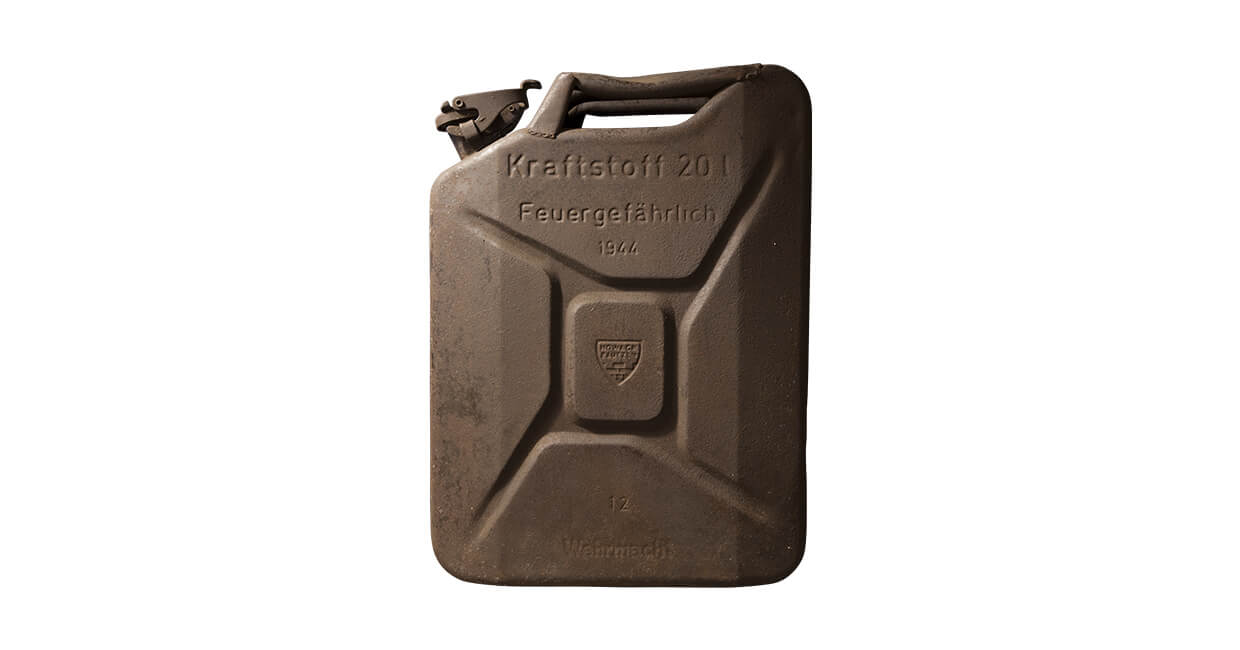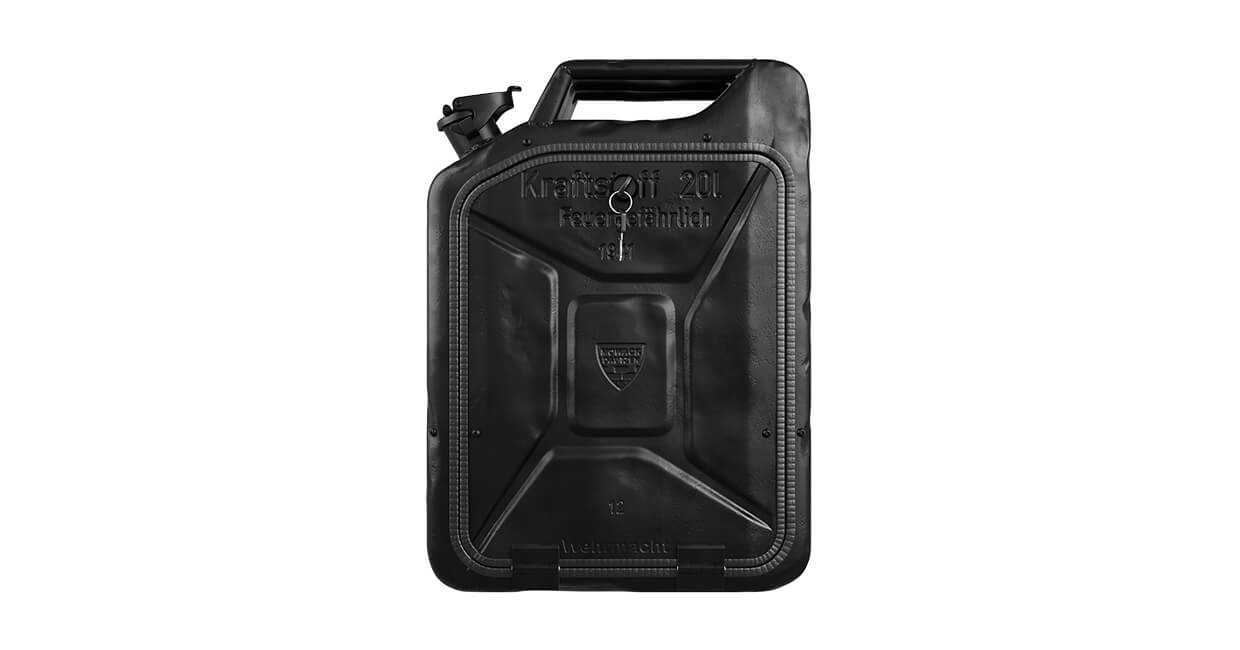Upcycling is when you re-use an item, you don’t break the material down or alter the shape. Danish Fuel designs are made from old used Jerry Cans collected from Military surplus warehouses. On this page we will introduce you to how we do make the design.


WHAT IS UPCYCLING?
ZERO WASTE
The DNA in Danish Fuel is to remain the as close to the original design as possible. We only use salvaged Military Jerry Cans for upcycling to give the World History icon a new life and fight for a greener global environment. The upcycling process takes place in Denmark under high environmental standards subject to EU ISO regulations.
There will be traces of corrosion and dents in the body of the cabinets after decades of military use at the front lines. In the following paragraph we´ll run through the 8 steps of upcycling.
1. COLLECTING
All Danish Fuel Jerry Cans comes from Military surplus warehouses where they are left to scrap. We have salvaged the Jerry Cans and stock them in our warehouse in Denmark. At D-DAY in 1944, more than 21 million Jerry Cans were spread throughout Europe. According to our research, about 1800 different models of Jerry Cans exist.
2. CLEANING THE METAL
Hard weather, time and usage for many decades, has left its mark on the used military canister. Not only in shape of rust and several layers of paint, but also the smell of gasoline. To remove the gasoline smell, rust and paint, we start to loosen it, by burning the old canisters in a furnace for 24 hours. Next step – sandblasting.
3. SANDBLASTING
Sandblasting treatment is a very effective way to bring forward the clean metal. With a mix of recycled sand and water blast under high pressure onto the surface of the cans, we can remove all rust and old paint in every corner of the can. But not at to high pressure as this will destroy the cans and bring tension into the metal. Our master of sandblasting that appears on the image is Kim.
4. LASER CUTTING
Precision is everything. We are aiming for the highest level of quality, which is grounded in the precision of the production. There is no other way around bringing the details of the designed lines into alignment than by using a 3D laser cutter which can cut with astronomically low margins
5. WASHING & PAINTING
Before adding a new layer of paint, the Jerry Can has to be cleaned again as the surface is full of dust from the sandblasting. The cans are cleaned with a steamer and in order to avoid rust, we immediately dry the cans in an oven. We paint the cans with the same colors used to separate Jerry Cans from each other during the second world war. The different colors for the Jerry Cans indicated which type of liquid it contained. Another great invention, as this technique by using colors, was later used to find navigate around the metro or hospital etc.
6. WOODEN SHELVES
By making the interior of the cabinets of molded plywood, it takes the quality into another level of crafting. Molded plywood is the term for two- or three-dimensionally shaped products from multiple veneer layers that are glued together through heat and pressure in a pressing tool. The veneer layers are arranged crosswise at an angle of 90 degrees. At Danish Fuel we use Canadian Oak as the basic wood for our shelves. However, we also give you the opportunity to choose among Black stained Oak, American Walnut, Zebrano and Red Gum (Australian eucalyptus).
7. ASSEMBLY
When the body for the designs is ready made as new as it gets, the assembly begins. Many customized parts are used such as, hinges, mirrors, ID-tags, Locks and so on. The build the cabinets is likely like building a ship in a bottle.
8. PACKAGING
Luxury in every detail. Some says that the packaging is half of the experience when receiving a gift. So, with the offspring in 1941 we decided to design a gift box inspired by the World War II ammunition box. The same type of box was used for any kind of supplies ranging from food to ammunition. The box is stackable and has a rope handle to easily carry it.









